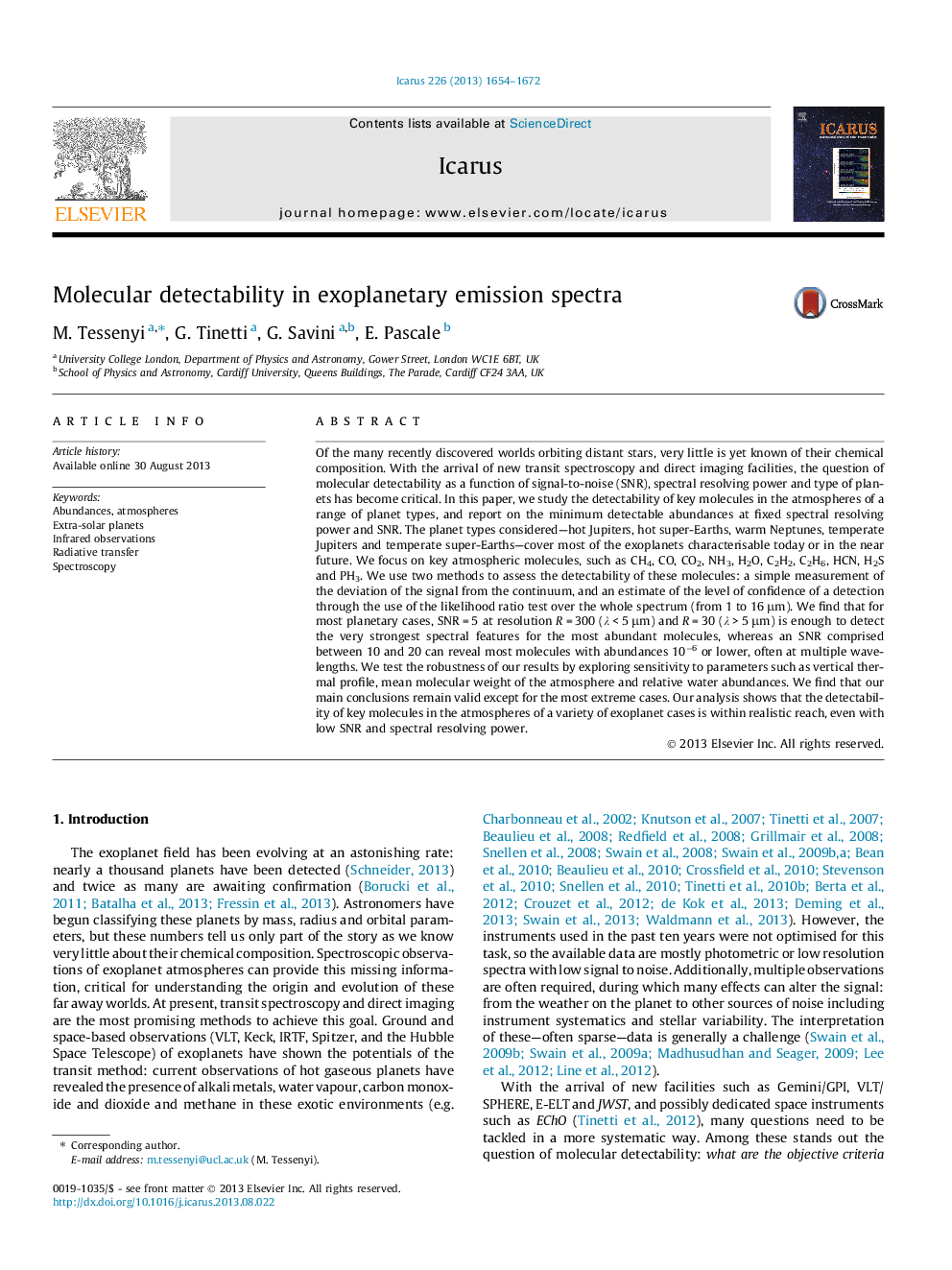| کد مقاله | کد نشریه | سال انتشار | مقاله انگلیسی | نسخه تمام متن |
|---|---|---|---|---|
| 10701409 | 1021129 | 2013 | 19 صفحه PDF | دانلود رایگان |
عنوان انگلیسی مقاله ISI
Molecular detectability in exoplanetary emission spectra
ترجمه فارسی عنوان
تشخیص مولکولی در طیف های انتشار آلاینده ها
دانلود مقاله + سفارش ترجمه
دانلود مقاله ISI انگلیسی
رایگان برای ایرانیان
کلمات کلیدی
فراوانی ها، اتمسفر، سیارات اضافی خورشیدی، مشاهدات مادون قرمز، انتقال شعاعی، طیف سنجی،
موضوعات مرتبط
مهندسی و علوم پایه
علوم زمین و سیارات
علوم فضا و نجوم
چکیده انگلیسی
Of the many recently discovered worlds orbiting distant stars, very little is yet known of their chemical composition. With the arrival of new transit spectroscopy and direct imaging facilities, the question of molecular detectability as a function of signal-to-noise (SNR), spectral resolving power and type of planets has become critical. In this paper, we study the detectability of key molecules in the atmospheres of a range of planet types, and report on the minimum detectable abundances at fixed spectral resolving power and SNR. The planet types considered-hot Jupiters, hot super-Earths, warm Neptunes, temperate Jupiters and temperate super-Earths-cover most of the exoplanets characterisable today or in the near future. We focus on key atmospheric molecules, such as CH4, CO, CO2, NH3, H2O, C2H2, C2H6, HCN, H2S and PH3. We use two methods to assess the detectability of these molecules: a simple measurement of the deviation of the signal from the continuum, and an estimate of the level of confidence of a detection through the use of the likelihood ratio test over the whole spectrum (from 1 to 16 μm). We find that for most planetary cases, SNR = 5 at resolution R = 300 (λ < 5 μm) and R = 30 (λ > 5 μm) is enough to detect the very strongest spectral features for the most abundant molecules, whereas an SNR comprised between 10 and 20 can reveal most molecules with abundances 10â6 or lower, often at multiple wavelengths. We test the robustness of our results by exploring sensitivity to parameters such as vertical thermal profile, mean molecular weight of the atmosphere and relative water abundances. We find that our main conclusions remain valid except for the most extreme cases. Our analysis shows that the detectability of key molecules in the atmospheres of a variety of exoplanet cases is within realistic reach, even with low SNR and spectral resolving power.
ناشر
Database: Elsevier - ScienceDirect (ساینس دایرکت)
Journal: Icarus - Volume 226, Issue 2, NovemberâDecember 2013, Pages 1654-1672
Journal: Icarus - Volume 226, Issue 2, NovemberâDecember 2013, Pages 1654-1672
نویسندگان
M. Tessenyi, G. Tinetti, G. Savini, E. Pascale,
